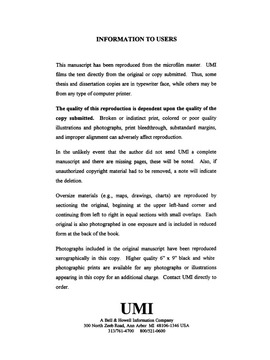| dc.contributor.advisor | Straka, Jerry M., | en_US |
| dc.contributor.author | Lasher-trapp, Sonia G. | en_US |
| dc.date.accessioned | 2013-08-16T12:30:04Z | |
| dc.date.available | 2013-08-16T12:30:04Z | |
| dc.date.issued | 1998 | en_US |
| dc.identifier.uri | https://hdl.handle.net/11244/5655 | |
| dc.description.abstract | Results suggest that UGA are only marginally important for warm rain formation in a short-lived cloud such as that studied here. Although the cloud has a very high liquid water content $\rm ({>} 5\ g\ m\sp{-3})$ and the maximum observed number of UGA are used, raindrop production is low $\rm ({\sim}300\ m\sp{-3}$ maximum concentration). No drop recirculation or breakup processes enhance the production of rain in the modeled iv cloud, because the cloud lifetime is very short. Although little rain is produced in the modeled cloud, the reflectivity factor reaches 40 dBZ within 12 minutes, demonstrating the danger in using the radar echo alone to define significant amounts of rain, particularly when UGA are present in the cloud. | en_US |
| dc.description.abstract | The nested-grid version of the Straka Atmospheric Model is used to simulate the three-dimensional wind and cloud water fields at a spatial resolution of 50 m. Within the simulated fields, "packets" of UGA are released at cloud base and grow in a Lagrangian framework by continuous collection. A history of radar reflectivity factor, as well as drop size spectra and trajectory information, is produced. | en_US |
| dc.description.abstract | The present study models the growth of UGA by collection within a cloud observed during the Small Cumulus Microphysics Study (SCMS). The observed cloud grew within a continental air mass (cloud base drop concentration $\rm {\sim}600\ cm\sp{-3}), $ reached a depth of 4.5 km and produced a 10 dBZ radar echo within 12 minutes. | en_US |
| dc.description.abstract | Ultragiant aerosol (UGA) have been proposed as important initiators of coalescence in warm cumuli. When these particles are ingested at cloud base, they can immediately collect the smaller cloud droplets, thereby reducing the time needed to initiate coalescence in the cloud. Observational studies have documented the existence of UGA near the ground at concentrations greater than 1000 $\rm m\sp{-3}, $ decreasing, with altitude. Whether or not these UGA concentrations are large enough to affect warm rain formation has been the subject of long-standing debate. Past modeling studies have been limited by one-dimensional treatments and inadequate observational data with which to compare the results. | en_US |
| dc.format.extent | ix, 164 leaves : | en_US |
| dc.subject | Cumulus. | en_US |
| dc.subject | Physics, Atmospheric Science. | en_US |
| dc.subject | Aerosols. | en_US |
| dc.subject | Cloud physics. | en_US |
| dc.title | Ultragiant aerosol growth by collection within a warm continental cumulus congestus. | en_US |
| dc.type | Thesis | en_US |
| dc.thesis.degree | Ph.D. | en_US |
| dc.thesis.degreeDiscipline | School of Meteorology | en_US |
| dc.note | Adviser: Jerry M. Straka. | en_US |
| dc.note | Source: Dissertation Abstracts International, Volume: 59-07, Section: B, page: 3502. | en_US |
| ou.identifier | (UMI)AAI9839789 | en_US |
| ou.group | College of Atmospheric & Geographic Sciences::School of Meteorology | |
